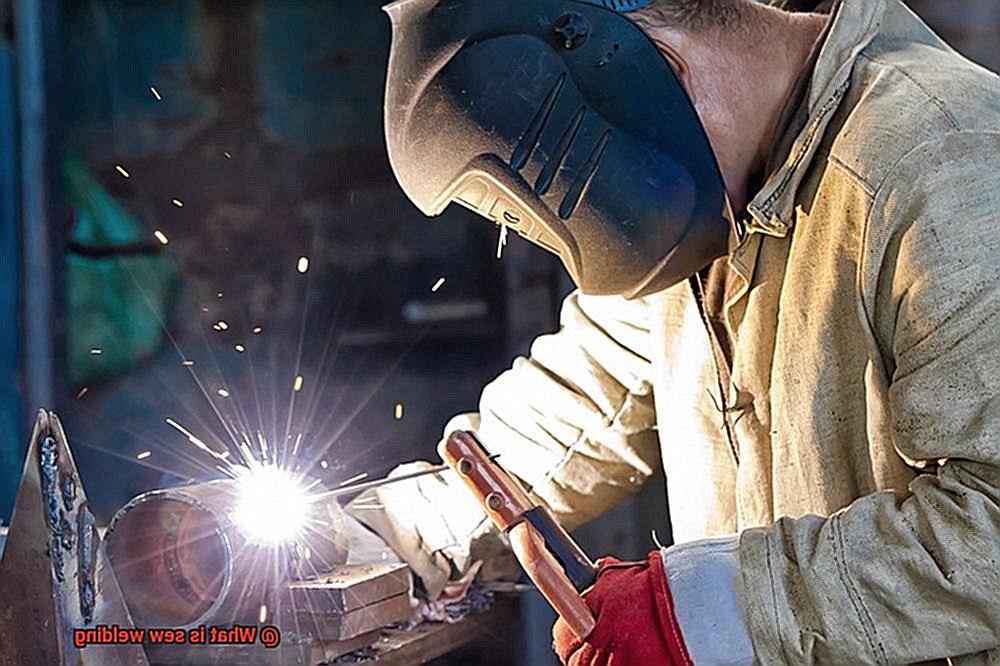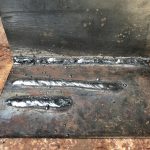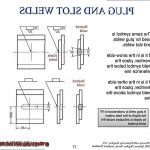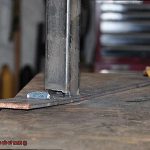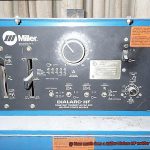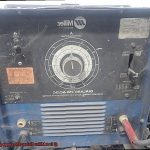Are you ready to take your welding skills to the next level? Look no further than the captivating world of sew welding. This versatile technique, also known as stitch welding, uses a series of overlapping spot welds to create a secure bond between metals.
What makes sew welding so intriguing is its flexibility. By adjusting the number and spacing of spot welds, you can customize the strength and appearance of your finished product. From constructing robust structural components to crafting delicate decorative patterns, the possibilities are endless.
Another impressive feature of sew welding is its ability to produce leak-proof seams. By creating a continuous bead of overlapping spot welds along the seam, you can completely seal joints and prevent leaks or gaps. It’s no surprise that this technique is popular in industries such as chemical, petrochemical, and energy for creating tanks, pipes, and other equipment.
But don’t be fooled by its industrial applications – sew welding has also captured the attention of artists and designers. With its intricate patterns and customizable designs, it has been used to create everything from large-scale sculptures to stunning jewelry.
Whether you’re an experienced welder or simply curious about this fascinating technique, sew welding is definitely worth exploring. Its adaptability, strength, and versatility make it a popular choice in various industries and creative endeavors alike.
What is Sew Welding?
Contents
Sew welding, also known as stitch welding or tack welding, is a versatile welding technique that’s widely used in the manufacturing and repair of sheet metal products.
Unlike traditional welding methods, sew welding involves making short welds at regular intervals along the seam of two pieces of metal. These short welds hold the two pieces of metal together while the final weld is being made, resulting in a stronger and more secure bond.
One of the major advantages of sew welding is that it allows for greater control over the welding process. The short welds ensure that the two pieces of metal are properly aligned, making it easier to create a strong and secure final weld.
Additionally, sew welding can be used to create a more uniform appearance because the welds are spaced evenly along the seam. This makes it an ideal choice for sheet metal components such as fenders, hoods, and doors in automotive or aviation industries.
Sew welding is not only restricted to sheet metal components but has also found its way into the fashion industry. It’s a unique and efficient method of joining materials together without leaving any visible stitching or thread.
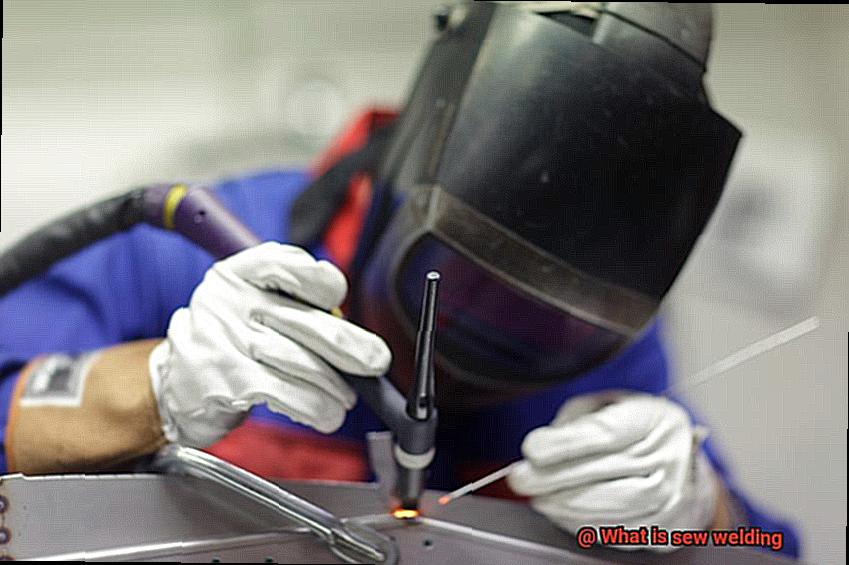
This technique is commonly used in the manufacturing of products made from fabrics, including high-end fashion items. The sewing machine uses a special needle that heats up as it passes through the materials, creating a strong bond between them. This process is often faster and more efficient than traditional sewing methods, making it a popular choice for mass production.
Another benefit of sew welding is its ability to work with a wide range of materials, including leather, vinyl, and other synthetic fabrics. It’s an efficient and reliable way to join materials together in a variety of applications.
Whether you’re repairing damaged sheet metal components or creating custom clothing or accessories, sew welding offers an efficient and reliable way to achieve your goals.
Benefits of Sew Welding
Also known as stitch welding, this versatile technique involves making small, intermittent welds along the length of a joint, and the benefits of this technique are numerous.
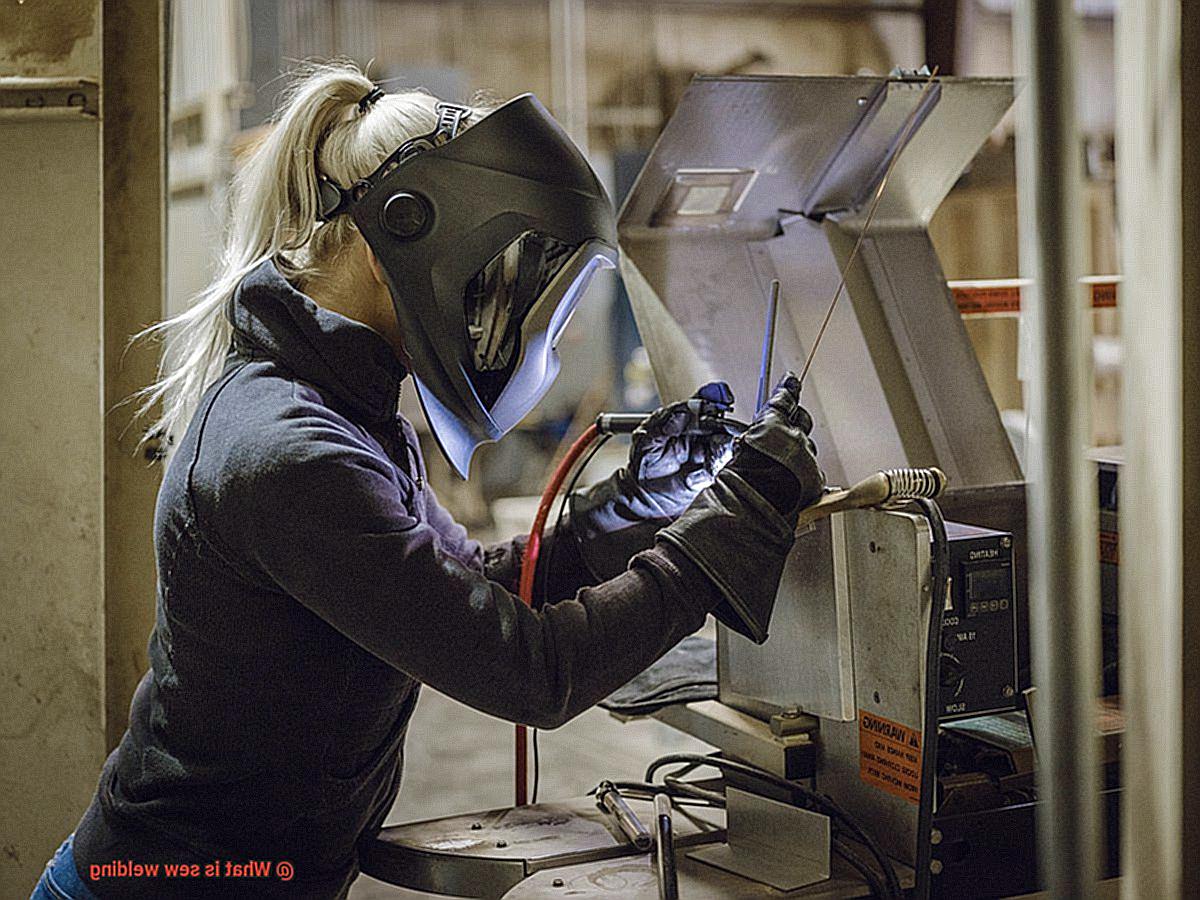
The first major benefit of sew welding is that it prevents warping and distortion of the joint. Since small, intermittent welds create less heat input into the joint, there is less risk of warping or distortion – particularly when working with thin metal sheets. This means that you can enjoy a smooth, flat finish without compromising on the structural integrity of your joint.
In addition to preventing warping and distortion, sew welding is incredibly fast and efficient. By making small welds along the length of a joint, sew welding can be completed much faster than traditional welding techniques. This makes it an ideal choice for high-volume production environments where time is of the essence.
But what about quality? Well, you’ll be pleased to know that sew welding produces a high-quality weld with excellent strength and durability. The series of small welds creates a strong, continuous bond between the two metal sheets, ensuring that the joint will hold up well over time. This means that you won’t have to worry about breakages or repairs down the line, saving you both time and money.
Speaking of money, sew welding is also a cost-effective option compared to traditional welding techniques. Because it requires less heat input and can be completed faster, it helps to reduce overall production costs. Additionally, because it produces a high-quality weld, there are fewer issues with defective parts or repairs down the road – which can further reduce costs.
Materials Used for Sew Welding
Sew welding is a game-changer in the textile industry, offering a versatile and efficient technique that produces high-quality welds with excellent strength and durability.
However, to achieve successful sew welding, the right materials are crucial.
Polyvinyl chloride (PVC) is the primary material used in sew welding due to its thermoplastic properties. It is widely used in construction, plumbing, and electrical applications. PVC can be easily softened by heat and re-hardened upon cooling, making it perfect for sew welding.
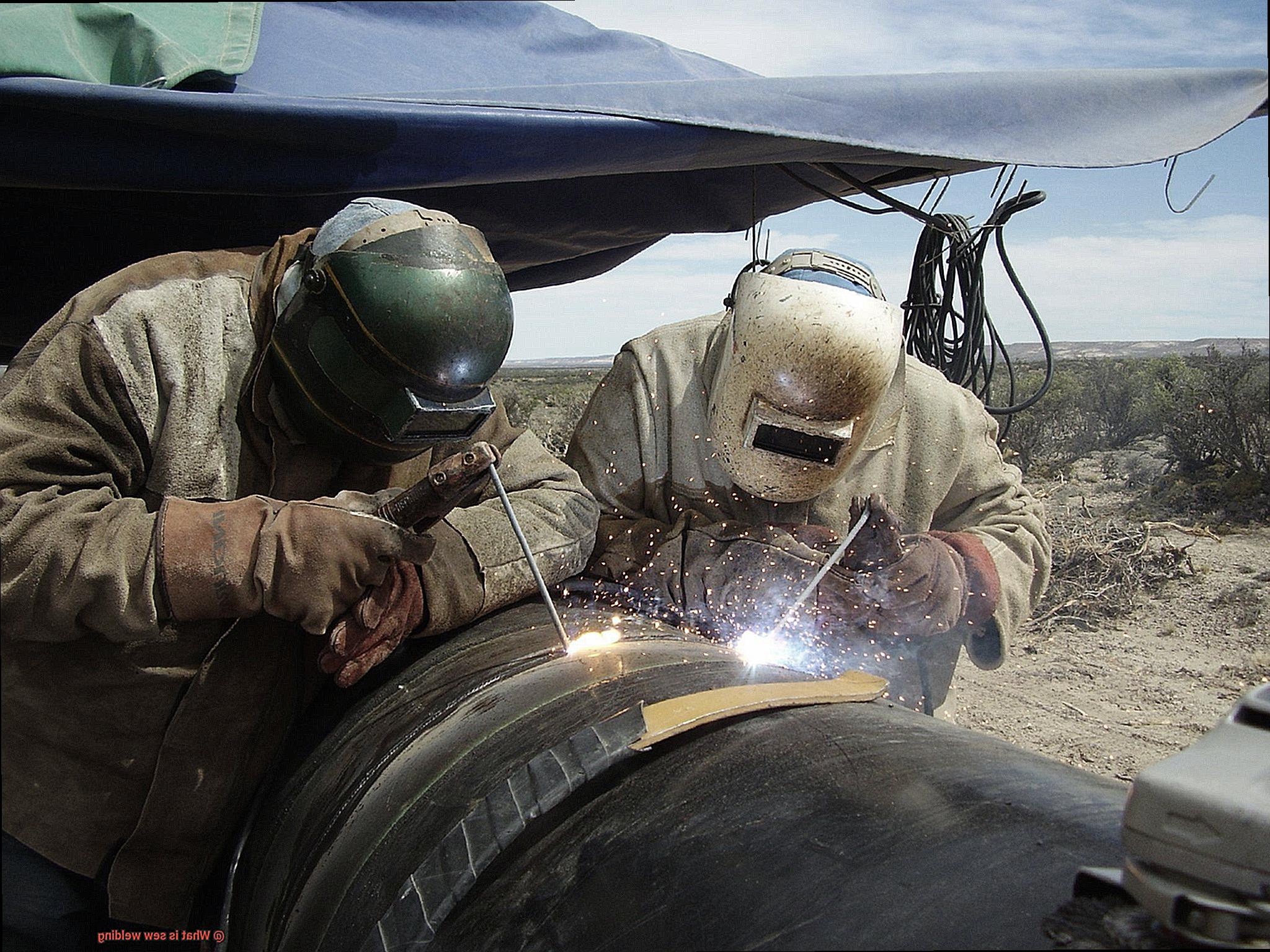
This material can be fused together using high-frequency (HF) or radio frequency (RF) electrodes that generate an electromagnetic field to heat the PVC material to its melting point. The electrodes come in various shapes and sizes to accommodate different types of seams and fabrics, ensuring optimal results.
In addition to PVC and HF/RF electrodes, other materials used for sew welding include hot air guns or blowers, silicone rollers, and cutting tools. Hot air guns or blowers are essential for softening the PVC material before welding. Silicone rollers help apply even pressure during the welding process, while cutting tools are necessary for trimming excess material after completing the weld.
It’s important to note that not all materials can be sew welded.
Only materials with a high degree of thermoplasticity such as PVC can be successfully welded using this technique. Other materials like nylon, polyester, or cotton cannot be sew welded due to their low melting points.
How Does Sew Welding Work?
Sew welding is a superhero in the textile industry, capable of fusing different materials together with incredible strength and durability. This process involves using a specialized sewing machine that pierces the materials repeatedly with a needle and thread, creating a series of small holes that fuse the materials together.
To begin sew welding, the materials to be joined are laid out and aligned. The sewing machine is then equipped with the appropriate needle type and thread, based on the specific materials being used. With the machine turned on, the needle moves rapidly up and down, piercing the materials and creating small holes. As the needle moves, it also carries the thread through the holes it has created, forming a tight seal between the materials.
One of the major advantages of sew welding is its ability to create an incredibly strong bond between the materials being joined. Unlike other bonding methods like adhesives or heat sealing, sew welding weaves the thread through multiple layers of material, providing a more secure connection. This makes it an excellent choice for projects that require durability and strength.
Another benefit of sew welding is its versatility. It can be used to bond a wide range of materials together, including fabrics, plastics, and even metals. This makes it an incredibly useful process that can be applied in many different industries.
Whether you’re manufacturing cars or producing clothing, sew welding can help you create high-quality products.
Applications of Sew Welding
Let me introduce you to sew welding, a versatile technique that can fuse different materials together with incredible strength and durability.
Its specialized sewing machine creates a tight seal between materials, making it an excellent choice for projects that require durability and strength.
Sew welding is a true game-changer in the manufacturing industry, and here are some of its most exciting applications:
- Firstly, sew welding is a go-to technique for creating protective clothing. Items like raincoats, waders, and drysuits rely on sew welding to create waterproof seams. The strong, flexible seams created by sew welding can withstand exposure to water and other liquids, making them ideal for protective clothing.
- Secondly, the automotive industry benefits significantly from sew welding. Car covers, seat covers, and dashboard covers all require waterproof seals that can protect them from moisture and other environmental factors. Sew welding makes it possible to create these seals with ease.
- Thirdly, sew welding is also popular in the manufacture of tents and awnings. When camping or spending time outdoors, you want your tent or awning to protect you from the elements. Sew welding allows manufacturers to create strong, watertight seams that can withstand exposure to harsh weather conditions. The medical industry also relies on sew welding in the production of hospital gowns, surgical drapes, and patient bedding. This technique helps to create a sterile barrier that can prevent the spread of infection.
- Finally, sew welding is an essential technique in the manufacture of inflatables such as bounce houses, inflatable boats, and water slides. The process allows manufacturers to create strong, airtight seals that can withstand frequent use and exposure to the elements.
Tips for Successful Sew Welding
If you’re in the business of making outdoor gear, sew welding is an essential process to create airtight seals and waterproofing. But it can be a challenging task, especially for beginners.
That’s why we’ve put together these seven tips to help you achieve successful sew welding every time.
Choose the Right Sewing Machine
The first step in successful sew welding is selecting the right sewing machine. Not all sewing machines are created equal, so make sure to choose one that can handle the thickness and type of materials you’re working with. A machine with adjustable speed control and tension settings will also help you achieve better results.
Use Appropriate Thread and Needles
Using the right thread and needle for sew welding is crucial. The thread should be strong enough to withstand the stress of the welded seam, while the needle should be sharp enough to pierce through the material easily without leaving large holes.
Prepare Materials Properly
Before starting sew welding, make sure that your materials are clean and free from any debris or dirt. Also, ensure that they are aligned correctly before sewing to avoid any issues with the finished product.
Adjust Sewing Speed
It’s important to adjust your sewing speed based on the type of material you’re working with. Slow down when working with thicker materials like PVC or nylon to ensure that your stitching is even and consistent.
Test Weld Seams
Testing weld seams before production can save you time, material, and money. Conducting a test weld seam will help identify any potential problems or issues with your fabric, thread, or machine settings.
Use Proper Heat Settings
When using hot air welders, it is crucial to follow the manufacturer’s recommended temperature settings for the materials you’re working with. Overheating can damage materials, while underheating can result in weak welds.
Practice Consistently
Sew welding requires practice and patience to master. The more you practice, the better you’ll become at achieving airtight seals and waterproofing.
By following these tips, you’ll be able to achieve successful sew welding and create high-quality products that meet your clients’ requirements.
When it comes to sew welding, choosing the right type of fabric for the job is crucial. Fabrics that are too thick or too thin may not weld properly and can result in weak seams. Preparing your fabric before the welding process is essential, as well. This includes cleaning your fabric to remove any dirt or debris that could interfere with the welding process.
During the welding process, maintaining consistent pressure and temperature is key to ensuring strong, durable seams. Specialized welding machines designed specifically for sewn seam welding can help you achieve this.
Finally, inspecting the finished product is essential to ensure that the welds are strong and free from defects. Any weak spots should be reinforced to prevent future failures.
6Duc9XzpoSs” >
Conclusion
In summary, sew welding is a valuable technique that can enhance your welding abilities. This process involves creating small welds intermittently along the joint to create a secure bond between metals or fabrics. Sew welding has many benefits, including preventing warping and distortion, faster production times, cost-effectiveness, and high-quality welds with excellent strength and durability.
Sew welding has become an essential practice in various industries such as automotive, aviation, chemical, petrochemical, energy, fashion industry, medical industry, and manufacturing of inflatables. It’s especially useful for creating waterproof seals in protective clothing like raincoats or surgical drapes.
To achieve successful sew welding results, it’s important to select the right sewing machine with adjustable speed control and tension settings. Additionally, using appropriate thread and needles for sew welding is crucial. Preparing materials before starting sew welding by cleaning them properly is necessary.
By following these tips for successful sew welding such as:
- Selecting the right sewing machine
- Using appropriate thread and needles
- Preparing materials properly
- Adjusting sewing speed
- Testing weld seams
- Using proper heat settings
- Practicing consistently
